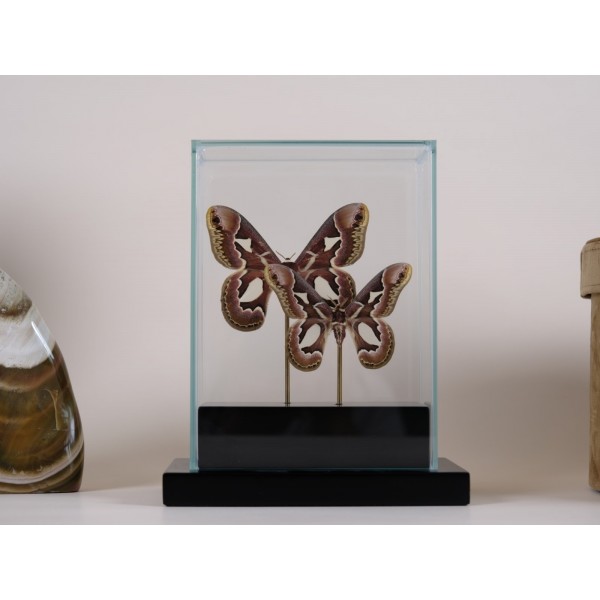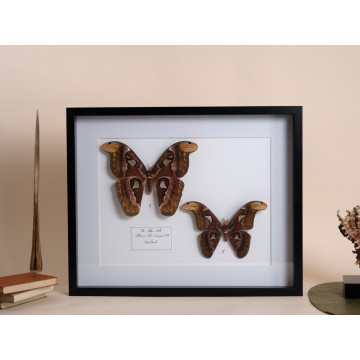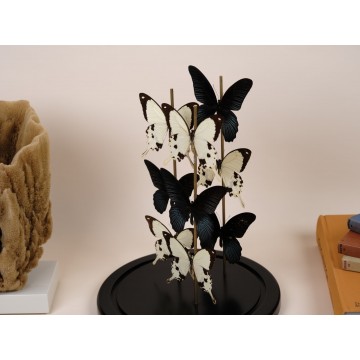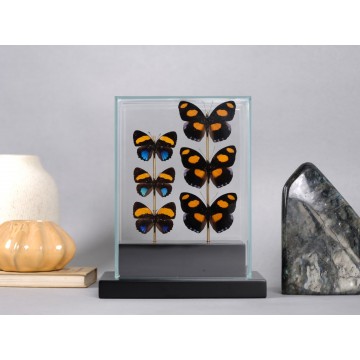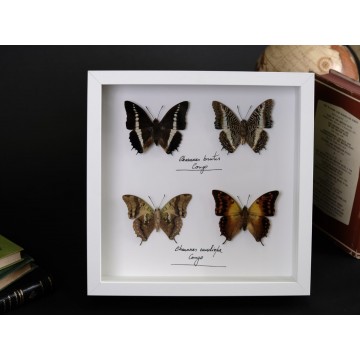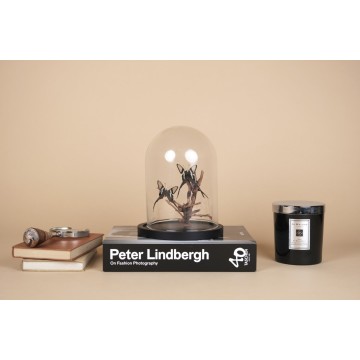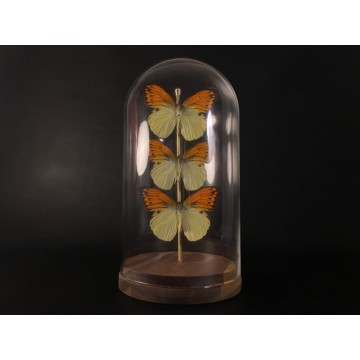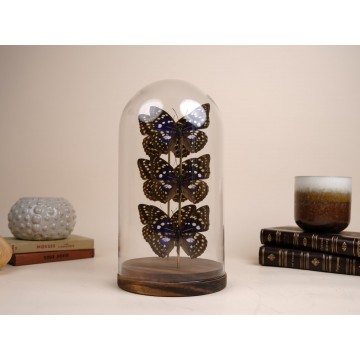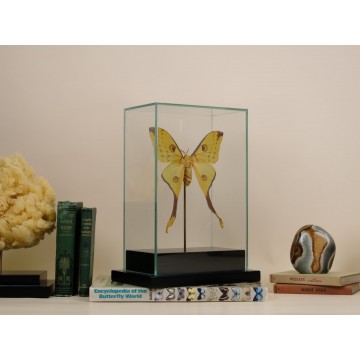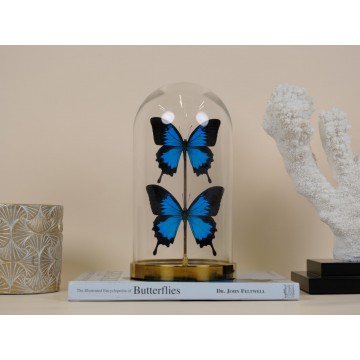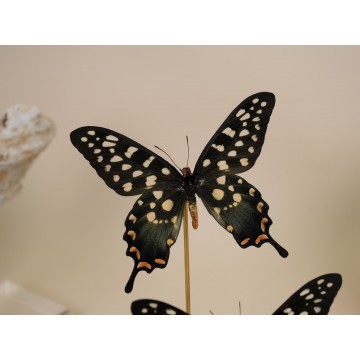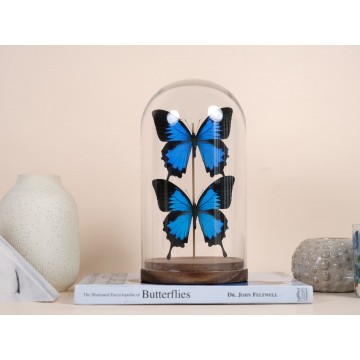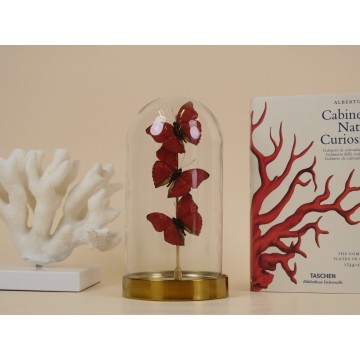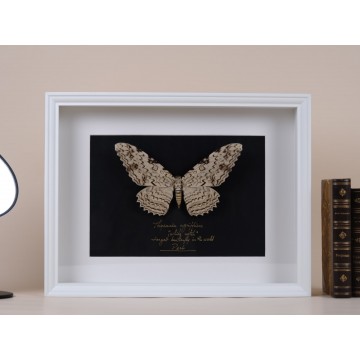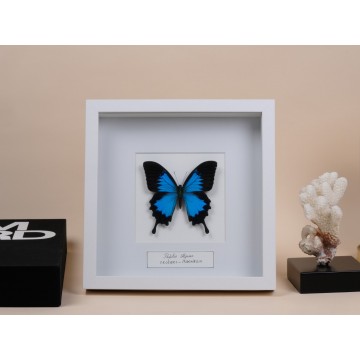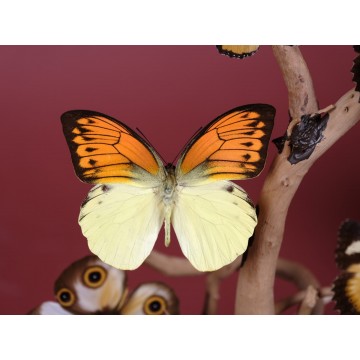Attacus atlas couple frame
Attacus atlas or Atlas moth - a couple (male and female), from Thailand, in a black wood frame.
The Atlas moth is one of the largest lepidopterans, with a wingspan measuring up to 24 cm (9.4 in). As in most Lepidoptera, females are noticeably larger and heavier than males, while males have broader antennae. Both forewings have a prominent extension at the tip, with markings that resemble the head of a snake, a resemblance which is exaggerated by movements of the wings when the moth is confronted by potential predators.Their habitat is primarily dry tropical forests, secondary forests, and shrublands across South Asia, East Asia, and Southeast Asia, including Borneo.

